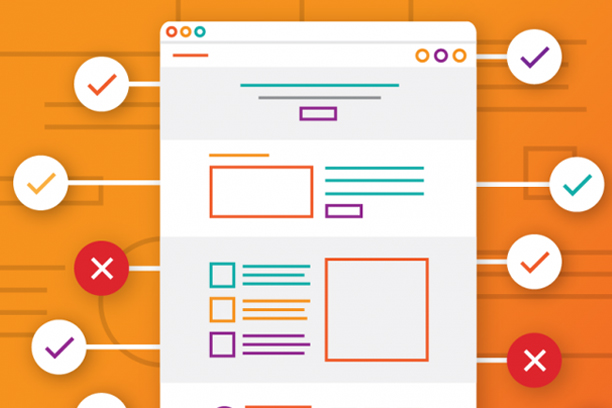Work Hours
Monday to Friday: 9AM - 6PM
Weekend: Closed

The internet is a gateway to information, services, and opportunities. However, for millions of people with disabilities, accessing websites can be challenging when digital platforms are not designed with inclusivity in mind. Ensuring accessibility is not just about compliance with legal standards—it’s about creating a better experience for all users.
A well-designed website that follows accessibility guidelines helps individuals with visual, auditory, motor, and cognitive disabilities navigate digital spaces effortlessly. It also improves usability for older adults, users with temporary impairments, and even those in different environmental conditions.
In this blog, we will discuss key principles of web accessibility, best practices, and tools to help designers and developers build websites that are functional and inclusive.
1. Understanding Web Accessibility
What is Web Accessibility?

Web accessibility ensures that all users, regardless of their abilities or disabilities, can access, understand, and interact with digital content. This includes individuals with:
- Visual impairments (blindness, color blindness, low vision)
- Hearing impairments (deafness or hearing loss)
- Motor impairments(difficulty using a mouse, reliance on keyboard navigation)
- Cognitive disabilities (dyslexia, ADHD, learning difficulties)
Key Guidelines: WCAG Principles
The Web Content Accessibility Guidelines (WCAG) are the global standard for web accessibility. These guidelines focus on four key principles:
- Perceivable – Users must be able to recognize and process content (e.g., using alt text for images).
- Operable – Navigation and interface should be user-friendly (e.g., keyboard accessibility).
- Understandable – Content should be readable and intuitive (e.g., clear form labels).
- Robust – Content should be compatible with different assistive technologies.
By following these principles, websites become more inclusive and accessible to a diverse audience.
2. Best Practices for Inclusive Website Design
Creating an accessible website requires thoughtful design choices that accommodate diverse user needs. From typography to navigation, every element plays a role in ensuring an inclusive experience. Below are key website design best practices that help improve accessibility and usability for all visitors.
2.1. Text and Typography
Readable text is fundamental for accessibility. Here’s how to optimize typography:
- Use legible fonts – Choose sans-serif fonts like Arial, Verdana, or Open Sans, which are easier to read.
- Maintain sufficient font size – A minimum of 16px ensures readability.
- Adjust line spacing – Use 1.5x spacing between lines and 2x between paragraphs.
- Ensure strong color contrast – Text should stand out against the background. A contrast ratio of at least 4.5:1 is recommended for normal text and 3:1 for larger text.
- Avoid using text alone for communication – Use symbols, icons, or colors as additional indicators.
2.2. Keyboard Navigation and Focus
Many users rely on keyboard navigation instead of a mouse. Ensuring full keyboard accessibility means:
- Logical tab order – Interactive elements should follow a predictable sequence when navigating with the Tab key.
- Visible focus indicators – Highlight elements as users navigate, making it clear where they are on the page.
- No keyboard traps – Users should be able to move freely through content without getting stuck in one element.
2.3. Alt Text for Images and Multimedia
Images and videos should be accessible to users who rely on screen readers:
- Provide descriptive alt text – Every image should have a meaningful description.
- Use empty alt attributes (alt=””) for decorative images – This prevents unnecessary distractions.
- Include captions and transcripts for videos – Helps users with hearing impairments and those in noisy environments.
- Offer manual controls for multimedia – Autoplay should be optional, and users should have volume and playback control.
2.4. Accessible Forms and Interactive Elements
Forms and interactive components should be easy to navigate and use:
- Label all form fields clearly – Labels should describe the input required (e.g., “Enter your email” instead of just “Email”).
- Provide clear error messages – Errors should explain the issue and offer solutions.
- Enable assistive technologies – Use ARIA (Accessible Rich Internet Applications) landmarks to help screen readers understand form elements.
- Offer alternative verification methods – CAPTCHAs should include audio or logic-based challenges for users who cannot view images.
3. Tools and Testing for Accessibility Compliance
Testing a website for accessibility ensures that it meets the needs of all users. Both manual testing and automated tools play an important role.
3.1. Automated Accessibility Testing Tools
- WAVE (Web Accessibility Evaluation Tool) – Scans web pages and highlights accessibility issues.
- Google Lighthouse – Provides accessibility audits as part of Google’s developer tools.
- axe DevTools – A browser extension for accessibility testing.
- NVDA & JAWS – Screen readers for testing how content is interpreted for visually impaired users.
3.2. Manual Testing and User Feedback
- Keyboard navigation testing – Navigate your website using only a keyboard to check usability.
- Screen reader testing – Use NVDA or JAWS to verify content readability.
- Real user feedback – Involve people with disabilities in usability testing to identify real-world issues.
3.3. Accessibility Checklist
To keep accessibility on track, here’s a quick checklist:
- Do images have descriptive alt text
- Is there enough color contrast for readability?
- Can all content be accessed with a keyboard?
- Are form labels clear and informative?
- Do videos have captions and transcripts?
- Is the website compatible with screen readers?
4. The Business Benefits of an Accessible Website

4.1. Expanding Your Audience
An accessible website ensures millions of people with disabilities can use your services. It also benefits users facing temporary challenges, such as a broken mouse or reading content in bright sunlight.
4.2. Improving SEO and Site Performance
Search engines prioritize accessible websites. Practices such as adding alt text, using proper heading structures, and improving readability can boost rankings.
4.3. Legal Compliance and Risk Reduction
Many countries have laws requiring digital accessibility, such as:
- Americans with Disabilities Act (ADA) – Applies to businesses in the U.S.
- Section 508 – Federal law requiring accessibility in government-related services.
- WCAG Guidelines – The global standard for web accessibility compliance.
Failure to comply can lead to lawsuits, fines, and reputational damage.
4.4. Enhancing User Experience (UX) for All
Accessible websites offer a smoother, more intuitive experience for all users. Features like simplified navigation, structured content, and optimized contrast improve usability for everyone.
Conclusion
Web accessibility is not just a requirement—it’s an opportunity to create better digital experiences for all users. By following best practices, using the right tools, and continuously improving design, businesses can ensure that their websites are inclusive and effective.
Making accessibility a priority benefits everyone – users, search engines, and businesses alike. If you haven’t evaluated your website’s accessibility yet, now is the time to start.
Need help optimizing your website for accessibility? Contact today to create an inclusive digital experience.

